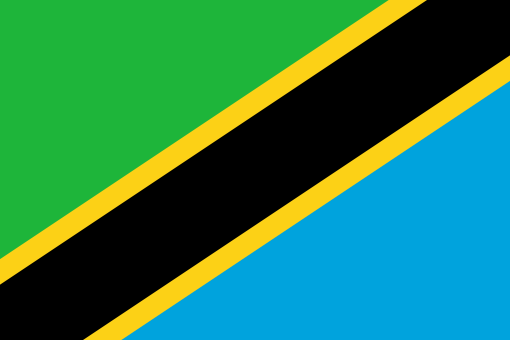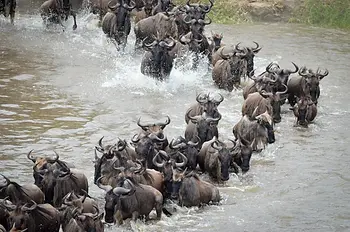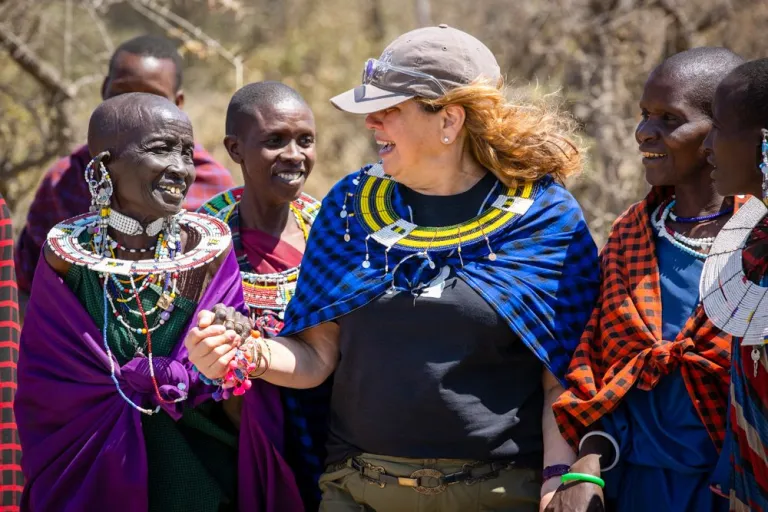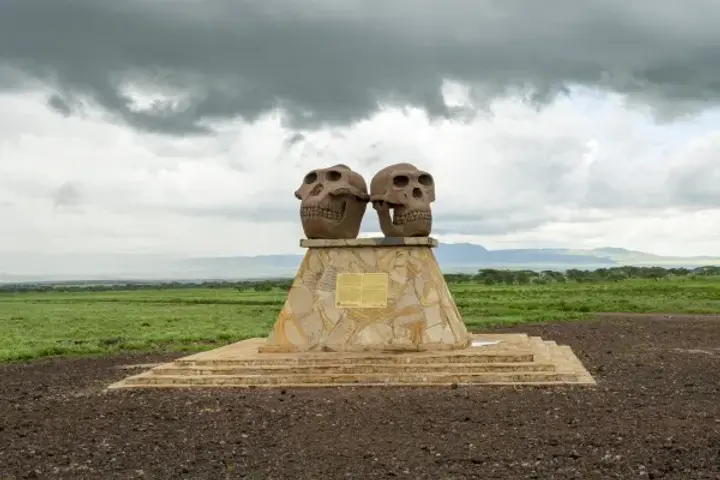Table of Contents
THE RIGHT COUNTRY FOR YOUR AFRICAN SAFARI VACATION…

Why Tanzania is the 1 African safari choice? When it comes to choosing which country to visit for your ultimate safari experience, there are many factors to consider. Many travelers find themselves torn between magnificent tales of Kenya, South Africa, Zimbabwe, Kenya, and Tanzania. Understanding which destination will provide the most authentic and meaningful experience will help you focus on which of these countries is right for you. After some examination, Tanzania becomes the obvious choice for many. Here’s why we agree.
Kenya, South Africa, Zimbabwe, and Tanzania all provide opportunities to see diverse wildlife in protected parks, but Tanzania provides the richest wildlife experience.
As its neighbor, Kenya shares many of the same types of wildlife in its safari. However, Kenya has suffered from overtourism, and shrinking wildlife habitat has further limited opportunities to experience its wildlife. More specifically, Kenya and South Africa at the bottom of the African continent have dedicated less than 10% of their land mass as protected parks.
In contrast, more than a third of Tanzania’s land mass has been set aside as protected parks – and these areas boast spectacular areas of some of the wildest expanses available for your safari experience.



Tanzania boasts a richer abundance of wildlife in its expansive natural areas compared to South Africa’s protected parks. With numerous diverse wildlife reserves, Tanzania provides a greater likelihood of encountering sought-after animals in comparison to smaller and more congested parks. The prospect of witnessing “The Big Five”—lions, leopards, rhinoceroses, elephants, and African buffaloes—is notably higher in Tanzania. Ngorongoro Crater alone is home to all these species, and they are spread across various other parks in Tanzania.

WE’VE LISTED SOME MAJOR REASONS WE BELIEVE TANZANIA IS THE PLACE TO BE FOR THE ULTIMATE AFRICAN SAFARI.
The Great Migration

The Great Migration is a phenomenal spectacle of the natural world. The migration unfolds continuously throughout the year, encircling the Serengeti in a perpetual cycle. As depicted in the illustration, most of this awe-inspiring phenomenon occurs within Tanzania, with a slight portion extending into Kenya during the mid-year period. Tanzania offers a plethora of locations to witness The Great wildebeest migration, and it stands as the exclusive destination to observe the birth of newborns during the initial months of the year in the southern region.
More than two million wildebeest, zebras, antelopes, gazelles, and various other animals embark on a perpetual journey across the Serengeti, all driven by the quest for fresh grass and water. This remarkable migration follows a consistent clockwise pattern around the Serengeti each year. Nowhere else on Earth can you witness this extraordinary spectacle, accompanied by the unique symphony of sounds and the distinctive aromas of the wild. Enormous herds of wildebeest synchronize their movements and vocalize collectively, creating a living entity akin to the synchronized flight of flocks of birds, but grounded on land. It is truly a mesmerizing sight to behold.

A visit to the southern Serengeti in January and February offers the unique opportunity to witness the birth of countless young animals. Returning months later, you can observe these same offspring crossing rivers in the northern Serengeti, trailing alongside the migrating herd. The cycle of life and death unfolds daily in dramatic fashion here, providing a riveting and deeply immersive experience.
In contrast to Kenya, where migration can only be observed during specific times of the year, Tanzania offers the flexibility of experiencing some stage of this remarkable phenomenon at any time.
Tanzanian Culture:
While the legendary Maasai and Bushmen are just a small fraction of Tanzania’s extensive cultural tapestry, they stand out as the most globally recognized facets of the country’s rich cultural diversity.
The Maasai, a Nilotic ethnic tribe residing in Tanzania and southern Kenya, have gained international renown for their unique culture, distinctive rituals, captivating ‘high jumping dance,’ distinctive traditional attire, and their reputation as courageous warriors. Remarkably, they continue to safeguard their homes, families, and livestock using traditional spears.
As nomadic pastoralists, the Maasai rely extensively on the cattle they raise for nearly all aspects of their sustenance, including food, clothing, and shelter. Given their agrarian lifestyle, hunting does not play a significant role in their daily activities. Instead, they periodically relocate their homes to facilitate the movement of their cattle for grazing and water. The wealth of the Maasai is measured by the quantity of cows they possess. Traditionally, they inhabit the Ngorongoro Conservation Area, where visitors have the opportunity to explore their villages and enter their huts.
The term “Serengeti” is an approximation of the Maasai word “siringet,” signifying the expansive plains of the area and translating to “endless plains.”
Dancing alongside people who are still immersed in their ancient culture in the Serengeti is an unparalleled, once-in-a-lifetime experience. The atmosphere there elicits a unique and indescribable feeling that cannot be replicated anywhere else.



The Hadzabe, commonly known as the Bushmen, is a safeguarded hunter-gatherer tribe located in the southwest Karatu District of the Arusha Region in Tanzania. They inhabit the areas surrounding the Lake Eyasi basin in the central Rift Valley and the adjacent Serengeti Plateau.
As descendants of Tanzania’s original pre-Bantu expansion hunter-gatherer population, the Hadzabe have likely inhabited their present territory for thousands of years. Their basic way of life has undergone relatively minimal modifications until the last century.
Genetically, the Hadza are not closely affiliated with any other ethnic group. Although initially grouped with the Khoisan languages due to the presence of clicks, the Hadza language (Hadzane) is now considered an isolate, lacking significant connections to any other language.
The Hadza stands as one of the last surviving hunter-gatherer tribes on Earth. Renowned for their rejection of material possessions and social hierarchy, they lead a nomadic lifestyle, roaming as required to locate game, tubers, and wild berries.
If desired, it is possible to spend a morning with the Hadza, engaging in activities such as arrow-making and bird hunting. They warmly welcome visitors into their daily routine, providing an opportunity to actively participate alongside them.
(Hunting with the Bushmen is something you can only do in Tanzania.)



Natural Wonders of Tanzania
Tanzania offers more than just breathtaking safaris; it boasts some of the world’s most awe-inspiring natural wonders. Let’s delve into these marvels more closely.
1. MT. KILIMANJARO


Mount Kilimanjaro stands as one of the seven wonders of Africa, a dormant volcano and the continent’s highest peak, towering at 19,341 feet above sea level. Renowned as a world-class climbing destination, Kilimanjaro is a must for avid hikers and likely holds a prominent place on their list of aspirations.
Beyond its remarkable height, Mt. Kilimanjaro distinguishes itself as the world’s tallest free-standing mountain, standing independently without any connection to a mountain range. Its considerable height and diverse climatic conditions give rise to a range of ecosystems, from lush rainforests at the base to alpine meadows and snow-capped peaks. The trek through these varied ecological zones offers a memorable adventure, allowing travelers to witness stunning vistas along the way. Mount Kilimanjaro’s unique blend of impressive height, ecological diversity, cultural significance, and the challenges it poses to climbers make it an extraordinary and iconic landmark.
Mount Kilimanjaro holds immense cultural significance for the local inhabitants residing on its slopes, particularly for Tanzanian indigenous tribes like the Chagga people, who consider it to be sacred.
2. THE SERENGETI

Apart from the Great Migration, the Serengeti harbors an astonishingly diverse range of wildlife. The vast plains are home to abundant populations of lions, elephants, giraffes, cheetahs, leopards, buffalo, hippos, and various species of antelope, birds, and reptiles. The ecosystem sustains an intricate food web, offering abundant opportunities for wildlife viewing and safari experiences, exemplified by activities like the balloon safari depicted here.
Overall, the Serengeti’s amalgamation of exceptional wildlife, stunning landscapes, cultural heritage, and dedicated conservation endeavors renders it an exceptionally unique and iconic destination, appealing to nature enthusiasts and adventurers alike.
3. NGORONGORO CRATER

The Ngorongoro Crater stands as a mesmerizing natural wonder, shaped by the collapse of a volcano millions of years ago. Holding the distinction of being the world’s largest inactive, intact, and unfilled volcanic caldera, its towering walls reach up to 600 meters (1,968 feet) above the crater floor. Within this enclosed environment, a microcosm of diverse ecosystems unfolds, featuring grasslands, forests, lakes, and swamps. This rich tapestry of habitats supports an abundance of wildlife, establishing the crater as one of Africa’s most densely populated areas for wildlife. The crater is home to thriving populations of lions, elephants, buffaloes, zebras, wildebeests, hippos, and rhinos. Notably, it stands out as one of the premier locations in Africa to observe endangered black rhinos in their natural habitat.
Beyond its natural splendor, the Ngorongoro Crater carries cultural significance as the ancestral homeland of the Maasai people. For centuries, Maasai pastoralists have harmoniously coexisted with wildlife in this region, and their enduring traditional grazing practices continue to shape the landscape to this day.
4. THE OLDUVAI GORGE

The Olduvai Gorge, situated in northern Tanzania on the eastern Serengeti Plains, stands as a vital paleoanthropological site. Celebrated for its extensive deposits of fossils and artifacts, it offers essential insights into human evolution and prehistory. Here are some key points about the Olduvai Gorge:
Often referred to as the “Cradle of Mankind,” the Olduvai Gorge has yielded some of the earliest evidence of human evolution. Fossil discoveries, including remains of ancient hominins such as Homo habilis and Paranthropus boisei, have played a crucial role in helping scientists unravel the origins and development of early humans.
In addition to fossilized remains, the Olduvai Gorge has yielded numerous stone tools and artifacts crafted by early humans. These artifacts, such as handaxes and flaked stone implements, offer insights into the technological capabilities and behavioral patterns of ancient hominins.
Safety in Tanzania
Tanzania stands out for its commitment to providing a safe and hassle-free safari experience, setting it apart from other African nations. Whether delving into the lively markets of Dar es Salaam or enjoying the tranquil beaches of Zanzibar, Tanzania’s overall calmness and stability foster an environment that allows for exploration with confidence and ease. While it’s prudent to stay vigilant and heed local advice to mitigate minor inconveniences, our experienced guides are dedicated to ensuring your security and a worry-free adventure.
Tanzania has earned a reputation for its travel-friendly atmosphere and is consistently ranked as one of the safest nations on the continent. With nearly 1.5 million visitors in 2022, representing a notable 64% increase from the previous year, Tanzania has firmly established itself as one of Africa’s leading safari destinations. Widely acknowledged as a secure haven for safari enthusiasts worldwide, Tanzania’s appeal is further underscored by its commitment to providing a safe and enjoyable experience for travelers.
Certainly, if safety is a priority, Tanzania has you covered. Beyond the captivating wildlife and natural wonders, Tanzania is dedicated to ensuring a secure environment for all those who seek to experience its diverse attractions.

Proximity to Gorillas in Rwanda
If you are seeking the perfect finishing touch, look no further: Tanzania is not merely a safari paradise but Tanzania also acts as your portal to an exhilarating gorilla trekking adventure in Rwanda. The challenge of tracking down gorillas in southern safari countries is effortlessly overcome with Tanzania, allowing a seamless transition from the Serengeti to Rwanda with a quick plane hop. It’s akin to enjoying the best of both worlds without breaking a sweat.

CURIOUS TO TURN THIS DAYDREAM INTO REALITY?
What are you waiting for… Book with us TODAY!